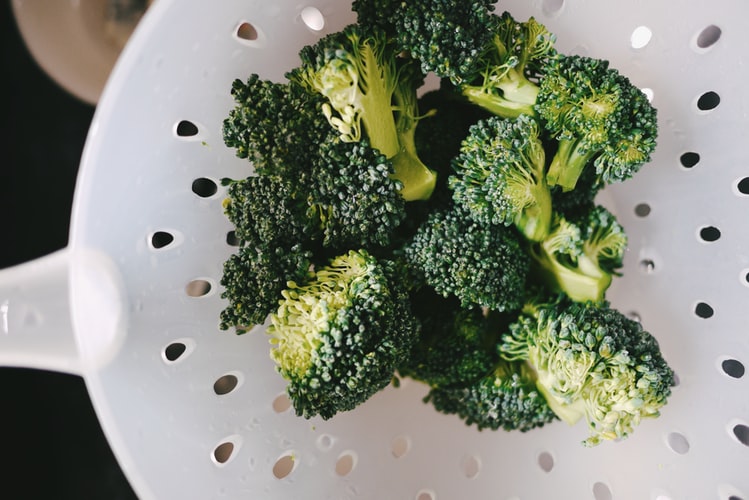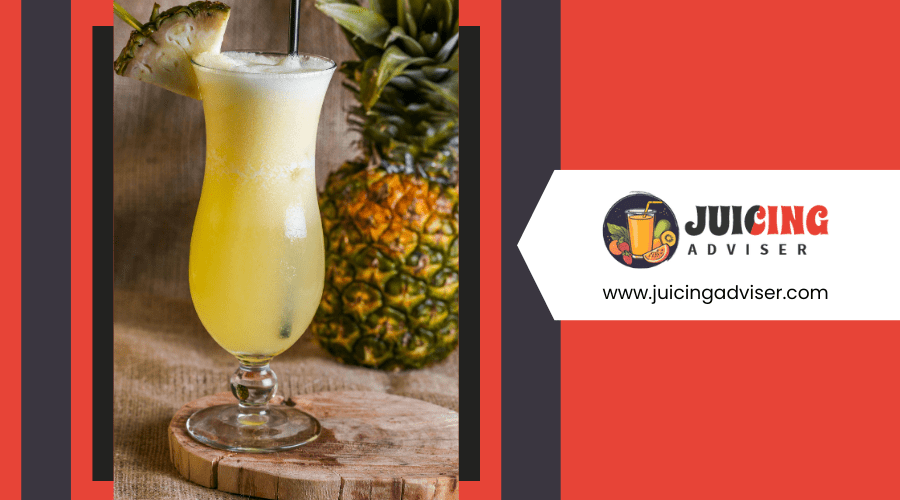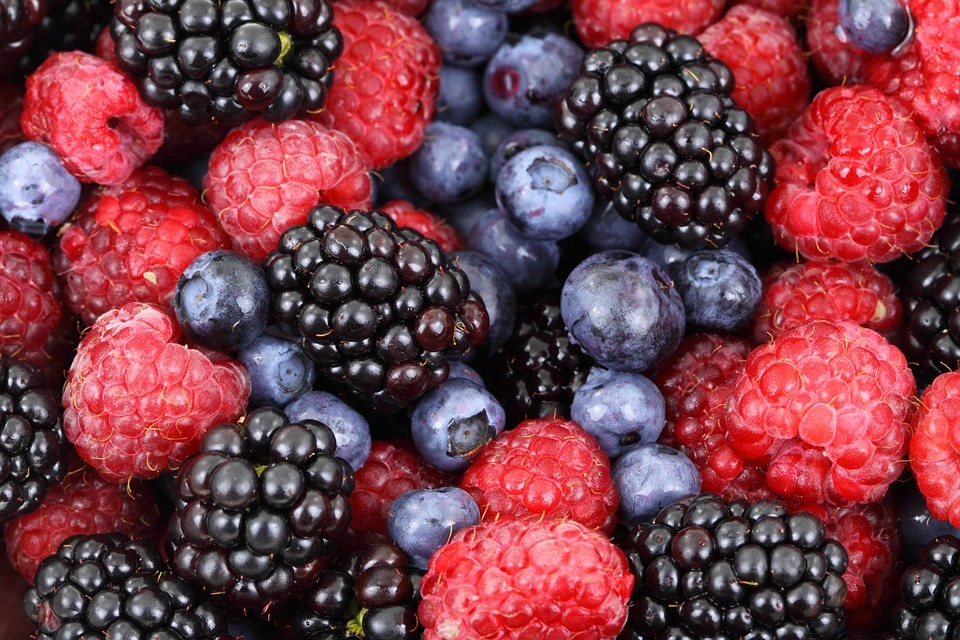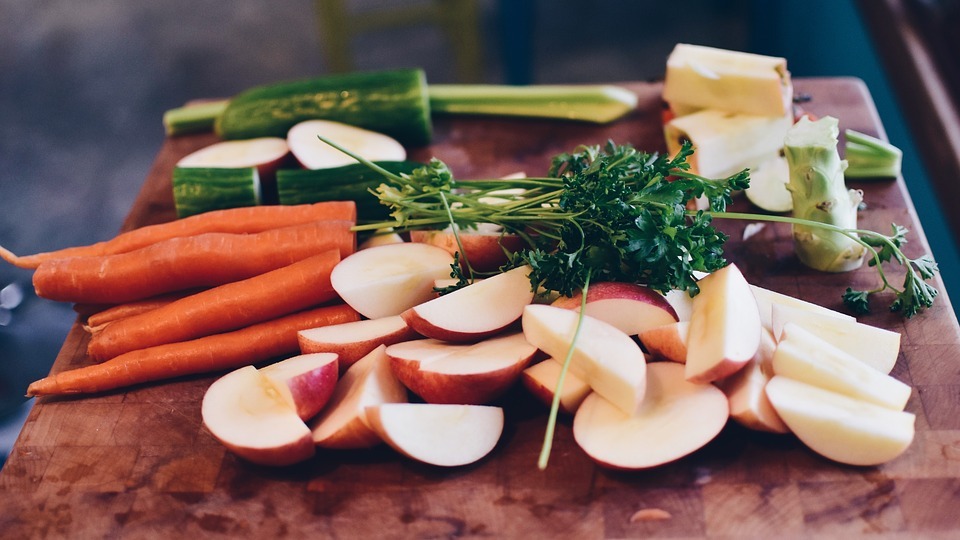Juice Vs. Vegetable Nutrition: Which Is Healthier?
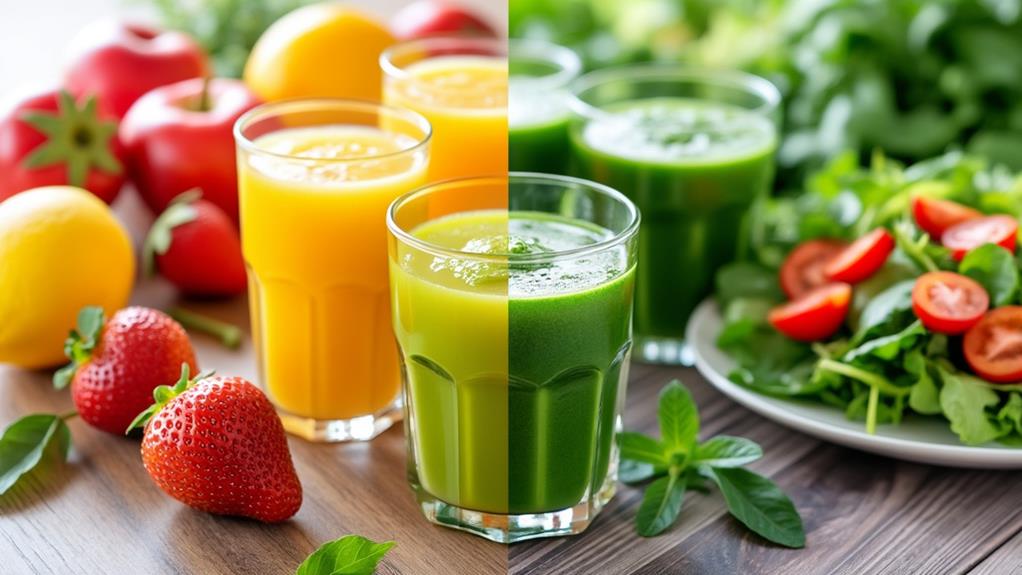
When considering your daily nutrient intake, you might wonder whether juice or whole vegetables are the better option. While juices offer concentrated vitamins and minerals, they often lack the fiber that whole vegetables provide. Fiber is crucial for digestion, blood sugar regulation, and satiety. However, juice has its own advantages, such as being a convenient way to quickly consume a variety of nutrients. So, how can you balance the two for optimal health? Let's explore the key factors that could guide your decision.
Juicing Vs. Whole Foods
Juicing and whole foods often spark debates among health enthusiasts, but it's essential to understand their key differences. When you opt for juicing, you primarily extract the liquid content from fruits and vegetables, which means you're missing out on most of the fiber. Fiber is crucial for digestive health and helps regulate blood sugar levels, making it an important component of a balanced diet.
In contrast, whole fruits and vegetables provide a more filling option, helping to control your appetite and prevent overeating—an advantage if you're managing your weight. Some believe that nutrient absorption from juices is superior, but research shows it doesn't significantly exceed that from whole foods. In fact, whole fruits and vegetables offer a better all-around choice for nutrition.
Moreover, diets rich in whole fruits and vegetables are associated with lower risks of chronic diseases, a benefit not matched by juice consumption alone. Juicing can also lead to a rapid intake of calories and sugars, especially with high-sugar fruits, potentially contributing to unhealthy dietary patterns. Therefore, prioritizing whole fruits and vegetables can offer more substantial health benefits.
Fiber: The Missing Link
Juicing vegetables and fruits often eliminates up to 90% of their insoluble fiber, crucial for digestive health and a balanced gut microbiome. Without this fiber, blood sugar levels can spike, leading to increased hunger and potential overeating. For optimal health and disease prevention, it is essential to consume whole, fiber-rich foods.
Essential Fiber Benefits
Fiber plays a crucial role in our diets, often considered the missing link in nutrition. It helps regulate blood sugar levels, preventing spikes and crashes. Consuming whole fruits and vegetables provides both soluble and insoluble fiber, aiding digestion and promoting a healthy gut microbiome.
Juicing removes up to 90% of insoluble fiber, potentially leading to digestive issues and reduced satiety, making whole fruits and vegetables a better choice for weight loss and overall health.
A high-fiber diet is associated with lower risks of chronic diseases such as heart disease, diabetes, and certain cancers. However, the average American consumes only about 15 grams of fiber daily, which is below the recommended 25 grams for women and 38 grams for men. Prioritizing fiber-rich foods is essential for long-term health.
Here's a quick comparison:
| Aspect | Whole Fruits & Vegetables | Juicing |
|---|---|---|
| Fiber Content | High | Low |
| Blood Sugar Control | Better | Worse |
| Feeling of Fullness | Greater | Lesser |
| Chronic Disease Risk | Lower | Higher |
Prioritize whole fruits and vegetables to meet your fiber needs and support overall health.
Fiber's Role in Digestion
Fiber is essential for digestion, ensuring regular bowel movements and preventing constipation. It adds bulk to stool, aiding its smooth passage through the digestive tract. Insufficient fiber intake can lead to irregular bowel movements or constipation, making digestion inefficient and uncomfortable.
Vegetables are an excellent source of dietary fiber, crucial for digestive health. Consuming whole vegetables provides both soluble and insoluble fiber. Soluble fiber, found in many fruits and vegetables, helps lower cholesterol by binding to bile acids and promoting their excretion. It also aids in regulating blood sugar levels.
A diet rich in whole vegetables ensures a good mix of both types of fiber, essential for a balanced digestive system. The recommended daily intake of fiber is about 25 grams for women and 38 grams for men. Many people do not meet these guidelines. Prioritizing whole vegetables in your diet can help you achieve these targets and support overall digestive health.
Juicing Fiber Loss
Juicing often removes up to 90% of the insoluble fiber found in whole fruits and vegetables, which is crucial for digestive health and blood sugar regulation. The resulting juice lacks this significant fiber, potentially leading to increased hunger and reduced satiety, which can cause overeating and weight gain.
Fiber plays a vital role in preventing digestive issues such as small intestinal bacterial overgrowth (SIBO). Without adequate fiber, you may experience more frequent digestive discomfort. Consuming whole fruits and vegetables ensures a balanced intake of nutrients and fiber, which is associated with a lower risk of chronic diseases. In contrast, a diet high in juiced products may lack these health benefits.
Experts recommend balancing juicing with the consumption of whole foods. By incorporating whole fruits and vegetables into your diet, you can enjoy the benefits of juicing while maintaining sufficient fiber intake. This approach supports better digestive health, general nutritional balance, and overall well-being.
Nutrient Absorption
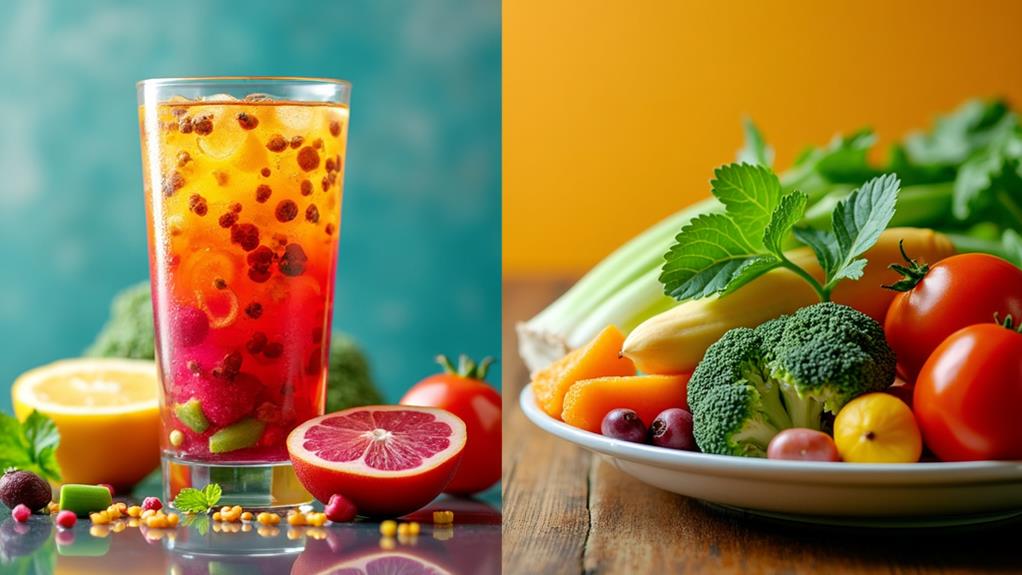
The method you choose for nutrient absorption can make a significant difference. Consuming whole fruits and vegetables provides not only vitamins and minerals but also essential fiber. This fiber slows down sugar absorption, regulates blood sugar levels, and promotes satiety. Conversely, juice cleanses offer nutrients in a liquid form, which can be easier for some people to digest, potentially enhancing short-term nutrient absorption.
It's important to weigh the pros and cons:
- Whole Fruits and Vegetables: Provide complete nutrients, including fiber, which supports long-term digestive health.
- Juice Cleanses: Deliver concentrated nutrients quickly but lack insoluble fiber, crucial for sustained nutrient absorption.
- Fiber: Slows sugar absorption, helps maintain stable blood sugar, and keeps you fuller longer.
- Blending: Retains all nutrients and fiber, optimizing both immediate and long-term health benefits.
While juicing can offer a quick nutrient boost, whole fruits and vegetables ensure a more balanced nutrient intake. Nutritional studies indicate that juices often result in lower total nutrient intake compared to a diet rich in whole produce. Choose wisely!
Juice Cleanses: Pros and Cons
Juice cleanses often attract individuals with the promise of quick weight loss and boosted nutrients. However, it's crucial to weigh the pros and cons before starting a juice cleanse.
Pros
- Rapid Weight Loss: Juice cleanses can lead to quick weight loss due to significant calorie reduction.
- Perceived Detoxification: Many believe that juice cleanses help detoxify the body.
- Increased Hydration: Consuming large amounts of liquids can improve hydration.
Cons
- Nutrient Deficiencies: Juice cleanses often lack essential nutrients and fiber, which can lead to deficiencies.
- Digestive Issues: The absence of fiber can cause digestive problems and gut health issues, including small intestinal bacterial overgrowth.
- Potential Weight Gain: The rapid weight loss is often unsustainable and can lead to rebound weight gain.
- Unhealthy Eating Patterns: Short-term juice diets can promote unhealthy eating patterns, making it hard to maintain long-term healthy habits.
Considerations
- Short-term Solution: Juice cleanses offer only temporary benefits and are not a long-term solution for weight management or health improvement.
- Lack of Scientific Evidence: There is little scientific support for the detoxification claims made by proponents of juice cleanses. The body has its own effective detoxification mechanisms.
- Long-term Health Impact: Engaging in juice cleanses can disrupt long-term healthy eating habits and may contribute to a cycle of dieting and weight gain.
Safety in Juice Preparation
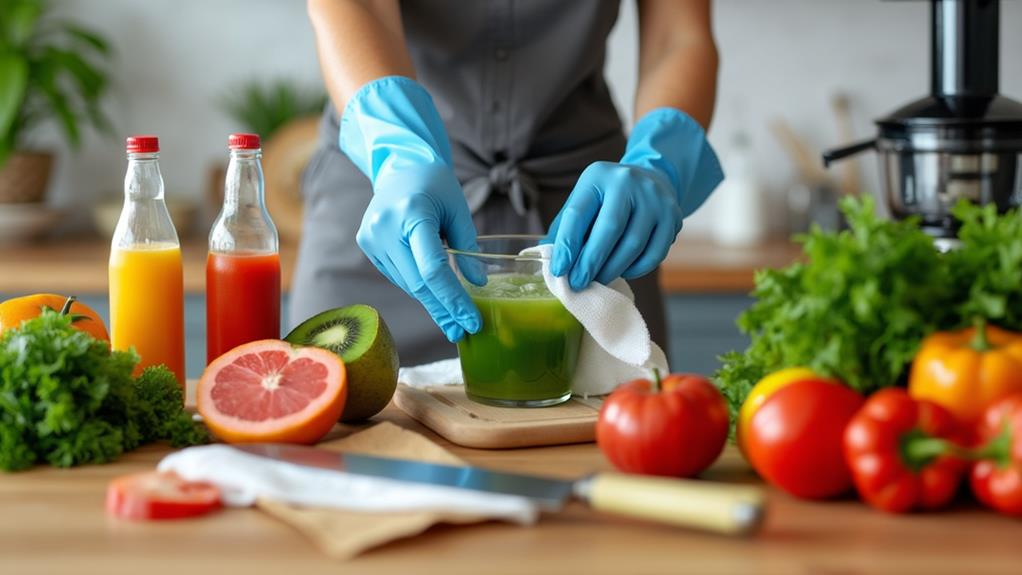
Ensuring the safety of your juice starts with understanding the potential risks involved. Freshly made juice can harbor harmful bacteria if not consumed quickly, making immediate consumption vital. Prioritize proper hygiene and cleanliness of your juicing equipment to prevent contamination.
For safe juice preparation, follow these steps:
- Clean Equipment: Wash and sanitize your juicing equipment thoroughly before and after each use to eliminate residual bacteria.
- Use Fresh Produce: Select fresh, high-quality fruits and vegetables, and wash them thoroughly before juicing.
- Immediate Consumption: Drink your homemade juices right after preparation to minimize bacterial growth.
- Proper Storage: If storing juice, use airtight containers and refrigerate immediately to maintain freshness and minimize spoilage risks.
Commercial juices are often pasteurized to eliminate pathogens, ensuring consumer safety. Homemade juices, lacking this process, necessitate strict hygiene practices. By following these guidelines, you can enjoy your homemade juices while minimizing health risks. Remember, safety in juice preparation involves mindfulness at each step from start to finish.
Juicing for Dietary Needs
Juicing offers a practical solution for those struggling to meet their daily fruit and vegetable intake, especially when nutrient levels in produce have declined. By turning your produce into juice, you can help ensure you're getting essential vitamins and minerals in an easily digestible form. This is particularly beneficial for individuals with digestive issues or malabsorption, as juicing removes most insoluble fiber, making nutrients more readily available for absorption.
Vegetable juices, especially those with minimal fruit, are an excellent option if you're managing your weight or blood sugar levels. They tend to be lower in sugar while still providing a rich supply of nutrients. Drinking a glass of vegetable juice daily can enhance your overall health, boost your immune system, and increase your vitality.
However, it's important to remember that while juicing can complement your diet, it shouldn't replace whole foods. Whole fruits and vegetables offer fiber and other benefits that juice alone cannot provide. Therefore, ensure you maintain a balanced diet rich in whole foods alongside your juice to optimize your nutritional intake and maintain a healthy weight.
Health Risks of Cleanses
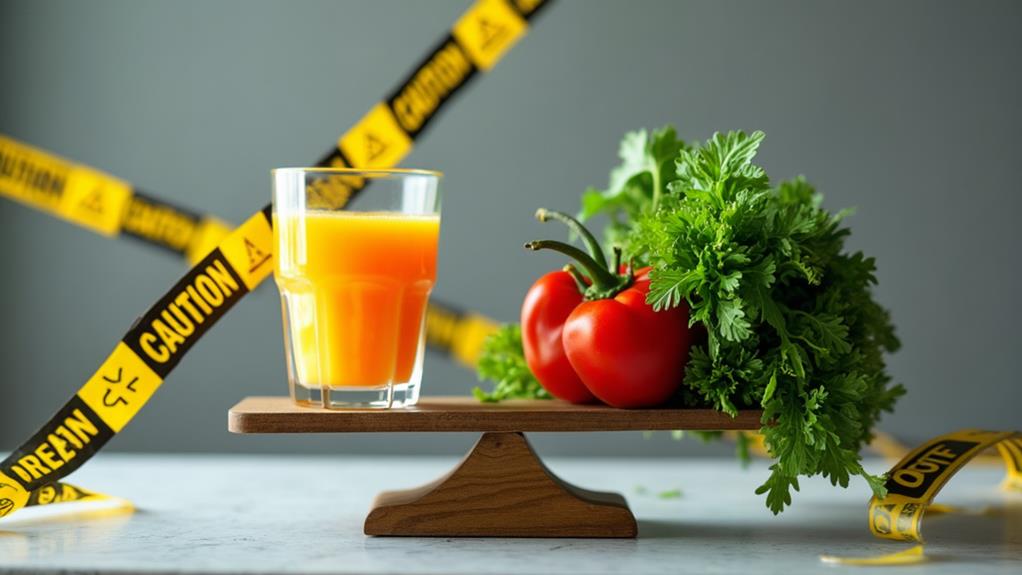
When considering juice cleanses, it is important to be aware of the potential health risks. These cleanses often lack essential nutrients and fiber, which can lead to deficiencies and digestive issues. Moreover, the claims that juice cleanses detoxify your body are not strongly supported by scientific evidence, as your liver and kidneys naturally perform this function.
Nutritional Deficiencies Risk
Many individuals turn to juice cleanses in hopes of detoxifying their bodies and quickly shedding pounds, but these diets can pose significant risks. When you rely solely on juicing vegetables and fruits, you may face serious nutritional deficiencies. Whole fruits and vegetables contain crucial nutrients such as protein, healthy fats, and diverse vitamins and minerals that juice alone can't provide.
Here are four key health risks associated with juice cleanses:
- Nutrient Deficiency: Juice lacks protein and healthy fats, leading to deficiencies in essential nutrients vital for overall health.
- Digestive Issues: Without the fiber found in whole fruits and vegetables, you might experience digestive problems and decreased satiety.
- Rebound Weight Gain: Juice cleanses can cause rapid weight loss due to severe calorie restriction, often leading to rebound weight gain and unhealthy eating patterns post-cleanse.
- Unhealthy Relationship with Food: The restrictive nature of juice cleanses can foster an unhealthy relationship with food, potentially leading to binge-eating or other disordered eating habits.
Experts recommend a balanced diet incorporating whole foods to ensure comprehensive nutrition and avoid the health risks associated with juice cleanses.
Fiber Absence Issues
A significant concern with juice cleanses is the absence of fiber, which is crucial for digestive health. Fiber helps prevent constipation, promotes feelings of fullness, and stabilizes blood sugar levels. Without fiber, juice cleanses can lead to rapid blood sugar spikes, increasing the risk of insulin resistance and type 2 diabetes over time.
Fiber also slows the absorption of sugars into the bloodstream, maintaining stable energy levels throughout the day. The lack of fiber in juice cleanses can cause digestive discomfort, such as bloating and gas, by disrupting gut bacteria and normal digestion.
Moreover, consistently relying on juice cleanses can foster unhealthy eating patterns. Your body might adapt to the low fiber intake, making it challenging to process whole foods effectively when you reintroduce them. Juice cleanses often strip vital nutrients found in the fibrous parts of fruits and vegetables, leading to potential nutritional deficiencies. Therefore, for overall health, it's better to consume whole fruits and vegetables to ensure you're getting the necessary fiber and nutrients.
Detox Claims Debunked
Contrary to popular belief, juice cleanses don't effectively detoxify your body. While they promise quick results, the reality is quite different. Juice cleanses often lead to nutritional inadequacies because they lack vital macronutrients like protein and healthy fats. This deficiency can cause long-term health issues if you rely on these cleanses frequently.
Additionally, eliminating fiber during juice cleanses can lead to digestive issues. Fiber is important for maintaining satiety and regular bowel movements. Without it, you may experience decreased fullness and potential problems like small intestinal bacterial overgrowth.
The rapid weight loss associated with juice cleanses is another concern. Although you might see quick results on the scale, this weight loss is usually not sustainable. Once you resume normal eating, rebound weight gain is common, as juice cleanses don't promote lasting dietary habits.
Key Points to Reflect On
- Nutritional inadequacies: Lack of protein and healthy fats.
- Digestive issues: Absence of fiber can cause problems.
- Rebound weight gain: Rapid weight loss isn't sustainable.
- Unproven detoxification: The body has its own detox mechanisms.
Market Trends in Juicing
Juicer sales in the U.S. peaked at 1.78 million units in 2013 but declined to 1.49 million by 2019, reflecting fluctuating consumer interest in juicing equipment. This trend illustrates how health-conscious consumers' preferences change with market dynamics. Recently, there's been a resurgence in the popularity of juicing, projected to grow by 8% by 2023, driven by an increasing focus on incorporating fresh fruits and vegetables into daily diets.
The market for pre-made juices has also expanded, expected to grow by 9% by 2023. This growth caters to busy individuals seeking convenient, nutritious options. Additionally, the rise in health consciousness has boosted the popularity of smoothies as meal replacements, further influencing market dynamics in both juicing and blending sectors.
Online platforms have become essential in shaping these trends, offering spaces for sharing reviews and recipes. This digital shift allows consumers to explore various juicing options, making it easier to integrate fresh produce into their routines. As interest in health and convenience grows, so does the evolution of the juicing market.
Seasonal Juice Recipes
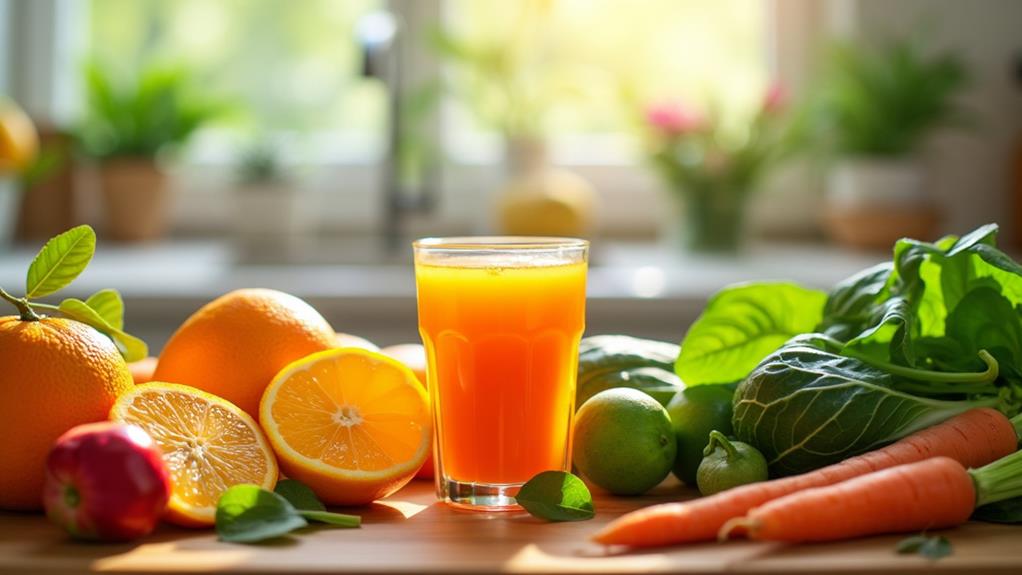
As the leaves change and temperatures drop, autumn brings an abundance of fresh, flavorful produce perfect for your juicing needs. Embrace the season's bounty with delicious and nutritious juice recipes that not only taste great but also offer numerous health benefits. Here are some ideas to incorporate seasonal produce into your fresh juice blends, helping you combat heart disease and oxidative stress.
- Pumpkin Apple Juice: Combine pumpkin and apples for a sweet, nutrient-packed juice. Rich in vitamins and antioxidants, it supports heart health and reduces oxidative stress.
- Kale Beet Juice: Mix kale and beets for a powerful, heart-healthy blend. Kale's cholesterol-lowering properties and beets' nitrates help improve cardiovascular function.
- Carrot Citrus Juice: Create a revitalizing mix of carrots and oranges. Carrots' beta-carotene fights oxidative stress, while citrus fruits can lower the risk of heart disease.
- Spiced Apple Juice: Blend apples with cinnamon and ginger for a warming, anti-inflammatory drink. It's perfect for cozy fall days and supports general wellness.
These recipes not only highlight the best of autumn's seasonal produce but also provide a tasty way to enhance your health. Enjoy experimenting with different combinations to find your perfect fall fresh juice!

